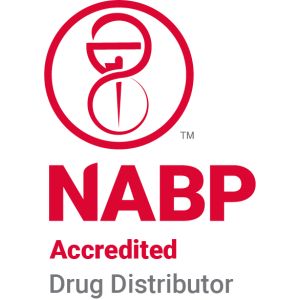Four Ways to Counter the Pain of Rapid Growth
James Cash Penney, who founded JCPenney in 1902, once said, “Growth is never by mere chance; it is the result of forces working together.” Though his quote comes from another time and sector, it’s as relevant today for the orthopedic medical device industry as it was decades ago in the then-fierce competition for department stores, apparel, and home goods.
To look at growth in-depth, imagine for a moment the first days of your company. Like many OEMs, your business was founded to bring to market new and innovative products that will improve patients’ lives. Stated simply, your founder(s) had an idea and built a business to bring it to life. Over time and with success, the business grew as more surgeons used your products, and as you launched new devices and product lines.
As your business becomes ascendant, growth becomes an ever-more-important imperative. It also becomes more elusive. Pressure from investors, leaders, and other stakeholders grows. The complexities grow, too, as leadership struggles to find more working capital to invest in innovation and product development, and as the pressure to speed time to market increases. New products and the expansion of your client base are essential to continued growth, as are strategic merger and acquisition activities. And it’s hard to pursue each of these necessities—together.
Soon, OEMs that seek and fuel rapid growth encounter the reality that this fast pace burns cash, introduces inefficiencies, and creates complexity that outstrips anything previously experienced.
Yet, as Penney noted, growth is the result of forces working together. And continual growth is a practice—and a discipline—that must be developed, maintained, and managed. Those OEMs that can channel growth and fuel it strategically have a distinct advantage. Here are four ways the most successful OEMs counter the pain of rapid growth.
#1: Allocate resources efficiently and effectively
At a certain point in the growth curve, it is folly to attempt to handle all capabilities and meet all obligations with the space and capacity available in-house. With rapid growth, responsibilities multiply faster than staff, and so employees end up wearing multiple hats or juggling more than hours, energy, and attention permit.
In that kind of crunch, customer service, responsiveness, and quality can all suffer. Consider how focused your staff is—is there a dedicated person handling loaner kit inspection and turnaround, for instance? Can you meet 24-hour turn times or expedited shipping with late orders without driving up fixed costs or increasing headcount? If not, consider how allocating resources differently can allow your team to focus on its top priorities.
#2: Focus on your core competencies
Speaking of top priorities, let’s return to your company’s founding for a moment. If you’re in the business of making devices that improve patients’ lives, that’s your purpose. Your purpose is not to manage the complexities of reverse logistics; instead, these processes are a necessary aspect of doing business as you do it. Rapid growth can introduce inefficiency—dare we even say messiness?—in inventory management and in other reverse logistics functions. When your team’s heads are spinning, it’s difficult to rise above the chaos of the moment to understand that freedom from being responsible for all tasks means greater focus for the things that only you can do—your core competencies of product development, innovation, and marketing, all of which will continue to fuel growth.
#3: Continually maintain capacity
Rapid growth can frequently result in increased demand—for more product, kits, surgeon support, account support, and more. As you grow, can you handle matching demand with inventory in the field—as quickly as a surgeon requires? Can you turn kits in 24 hours? Can you ship next-day if the order comes in after 11 pm? Can you meet peak or unanticipated demand? If you’re not outsourcing, maintaining your optimal capacity is impossible without increasing your fixed costs or headcount.
#4: Outsource wisely with an expert partner
Freeing up your talent to focus on core competencies and allocating your resources effectively and efficiently can go a long way toward countering the pain of rapid growth. In these ways, outsourcing can be one of the most potent ways to lessen your growth pains, as it enables the other three outlined above—the best allocation of resources that can flex with demand and help you focus on core competencies, so you can see growth that is truly the result of forces working in concert.
At Millstone, we get it. We believe quality drives patient success. That’s why we’ve perfected all the capabilities medical device manufacturers need to get to market. Today we offer post-manufacturing and aftermarket services to more than 50 customers, including some of the top 10 orthopedic companies in the world. We are constantly evolving our processes and services to help OEMs achieve sustainable success. We offer clean room packaging, medical device specific warehousing, finished goods distribution, loaner kit management, advanced inspection and reverse logistics services—all with an unparalleled focus on quality.
What could we help you do better? Learn more at https://millstonemedical.com.
Comments are closed.



